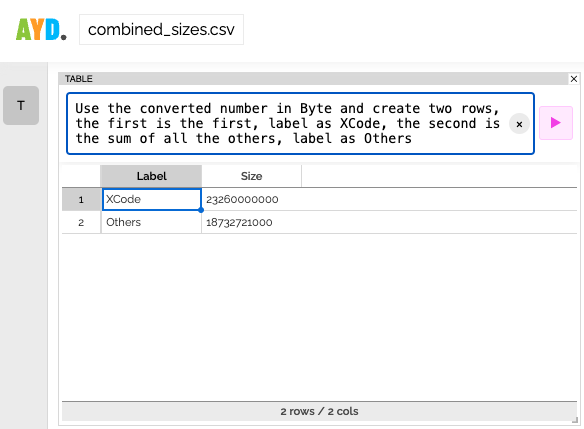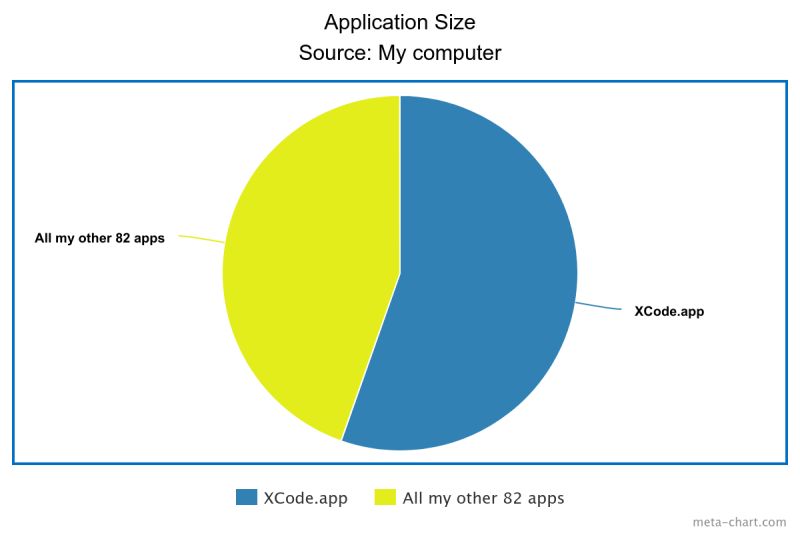Recently, I decided to free up some space on my laptop by getting rid of old files— a bit of digital spring cleaning.
While browsing through the Applications folder and sorting by size, I was surprised to find that the largest item was "XCode.app," taking up a hefty 23.26 GB of space!
That’s quite a number! 😲
Curious about whether I could safely remove it, I wanted to know more, specifically:
How does XCode's size compare to the rest of my applications, in percentage?
To figure this out, I first needed to gather some data.

I took a screenshot of my Applications folder and used Apple Preview’s built-in OCR feature to extract the text.
After a bit of manual cleanup, I had my dataset ready to go:

The next step was straightforward. I knew the size of XCode, but I needed to calculate the total size of all the other applications combined.
This is where the AskYourData tool came in handy. With a simple natural language query, I was able to get the numbers I needed. The tool also handled the unit conversions for me, as the dataset included sizes in various formats (GB, MB, KB). It converted each value appropriately to ensure the calculations were accurate.
Here's the prompt I used:
Use the converted number in Byte and create two rows, the first is the first, label as XCode, the second is the sum of all the others, label as Others

Using those numbers, I created an accurate pie chart to support my conclusion. My suspicion about the unusually large size of Xcode compared to other apps was confirmed. 😉
